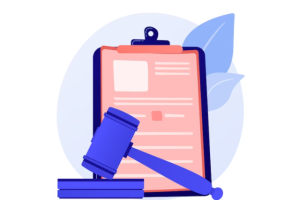
Case Study: Successful Defense in an Embezzlement Trial

White-collar crime is a serious issue that can have far-reaching consequences for individuals and businesses alike. Embezzlement, in particular, is a form of financial fraud that can result in significant financial losses for victims. However, fighting back against embezzlement charges is possible.
In this article, we'll explore a successful defense in an embezzlement trial. We'll delve into the definition of embezzlement and the laws surrounding it, as well as the challenges involved in proving it in court. Additionally, we'll discuss defense strategies and best practices for preventing embezzlement.
If you're facing embezzlement charges or want to learn more about this complex issue, read on for valuable insights and expert analysis.
- Understanding Embezzlement: Definition and Examples
- Embezzlement Laws and Penalties
- Proving Embezzlement: Tactics and Challenges
- Defense Strategies in Embezzlement Cases
- Preventing Embezzlement: Best Practices for Businesses
- The Consequences of Embezzlement: Legal and Reputational Fallout
- Case Study: Unraveling the Defense Tactics
- Conclusion and Key Takeaways
Understanding Embezzlement: Definition and Examples

Embezzlement is a form of white-collar crime that involves the misappropriation of funds or assets by an individual who has been entrusted with them. This type of financial fraud can occur in various settings, including businesses, nonprofits, and government agencies. Unlike other forms of theft, embezzlement involves a violation of trust, as the perpetrator often has a position of authority or responsibility that enables them to access the funds or assets they are stealing.
Examples of embezzlement can include a financial officer siphoning off funds from company accounts for personal use, an employee altering records to hide the misappropriation of funds, or a nonprofit executive diverting donations to their own bank account. In each case, the perpetrator is taking advantage of their position of trust for personal gain.
Embezzlement Laws and Penalties
Embezzlement is considered a serious offense and is punished accordingly. The severity of the punishment depends on the amount embezzled and the circumstances surrounding the crime. Embezzlement is a criminal offense and is subject to state and federal laws and regulations.
Laws differ from state to state but generally define embezzlement as the fraudulent conversion of property by a person to whom it has been entrusted. can involve anything from money to confidential information and often involves the manipulation of financial records to conceal the act.
| Offense | Punishment |
|---|---|
| Less than $1,000 | Fine or imprisonment of up to 1 year |
| $1,000 to $5,000 | Fine or imprisonment of up to 5 years |
| $5,000 to $10,000 | Fine or imprisonment of up to 10 years |
| Over $10,000 | Fine or imprisonment of up to 20 years |
In addition to fines and imprisonment, individuals convicted of embezzlement may be required to pay restitution to the victim or victims of the crime. They may also be subject to civil lawsuits for damages and other penalties.
Embezzlement can have long-lasting consequences, including damage to an individual's reputation and future employment prospects, as well as irreparable harm to businesses and organizations.
Proving Embezzlement: Tactics and Challenges
Proving embezzlement can be a challenging and complex process. To build a strong case against an alleged embezzler, investigators and prosecutors need to gather and present compelling evidence that supports their claim.
One of the key tactics used to prove embezzlement is to demonstrate that the defendant had access to the assets in question and had control over the handling of those assets. This can include bank statements, financial records, and other documentation that illustrates the defendant's role and responsibilities in relation to the embezzled funds.
Other tactics used to prove embezzlement include conducting interviews with relevant parties, such as coworkers and managers, and gathering witness testimony that supports the prosecution's case. Additionally, forensic accounting techniques may be employed to uncover discrepancies in financial records and trace the flow of funds from the embezzled account to the defendant's personal accounts.
Challenges in Proving Embezzlement
Despite these tactics, proving embezzlement can be challenging due to a number of factors. For instance, embezzlers may go to great lengths to cover their tracks, using sophisticated methods and tools to conceal their activities. Additionally, embezzlement cases often involve complex financial transactions and multiple parties, making it difficult to establish cause and effect.
Another challenge in proving embezzlement is establishing criminal intent. In some cases, embezzlers may claim that they believed they had permission to access and use the funds in question, or that there was a misunderstanding regarding the handling of financial assets.
Ultimately, the success of a prosecution's case will depend on their ability to present a compelling narrative that connects all the relevant pieces of evidence and demonstrates beyond a reasonable doubt that embezzlement occurred.
Defense Strategies in Embezzlement Cases
Defending embezzlement charges can be complicated, requiring a skilled and experienced legal team to build an effective defense strategy. Here are some defense strategies that attorneys may use:
- Challenging the evidence: The prosecution must provide sufficient evidence to prove that the accused person is guilty beyond reasonable doubt. A defense attorney may challenge the evidence presented by the prosecution, arguing that it is circumstantial or insufficient to prove guilt.
- Discrediting witnesses: Witness testimony can be a critical element in an embezzlement case. A defense team may attempt to discredit the witness by demonstrating their bias, lack of credibility or unreliability.
- Disproving intent: Intent is a crucial element in any embezzlement case, as it must be proven that the accused person intentionally and knowingly committed the crime. A defense attorney may argue that the accused person had no intention of committing the crime and was acting in good faith.
- Plea bargaining: In some cases, a plea bargain may be a viable option for the defense team. This can involve the accused person agreeing to plead guilty to a lesser charge or accepting a reduced sentence in exchange for a guilty plea.
- Proving innocence: In some cases, a strong defense may involve proving the innocence of the accused person. This can involve presenting an alibi, providing evidence of a mistaken identity, or offering alternative explanations for the alleged offenses.
It's important to note that every case is unique, and the defense strategy employed will depend on the specifics of the case and the strengths and weaknesses of the evidence against the accused person.
Preventing Embezzlement: Best Practices for Businesses
Embezzlement can be financially devastating for businesses, making it crucial to implement effective prevention strategies. Here are some best practices to consider:
1. Conduct Background Checks
Prior to hiring a new employee, conduct thorough background checks that include criminal history and financial record screenings. This can help identify any red flags that may increase the risk of embezzlement.
2. Segregate Duties
Separate duties and responsibilities among employees to prevent a single person from having control over all aspects of a financial transaction. This can include dividing tasks such as authorizing transactions, record-keeping, and reconciling accounts.
3. Implement Internal Controls
Establish strict internal controls, such as requiring two signatures for checks over a certain amount or performing surprise audits, to minimize the risk of embezzlement.
4. Educate Employees
Provide regular training to employees on the dangers of embezzlement and the importance of reporting any suspicious activity or behavior. This can help create a culture of accountability and transparency.
5. Monitor Accounts Closely
Regularly review financial accounts and statements to identify any irregularities or discrepancies. This can help detect embezzlement early and minimize losses.
6. Take Action When Necessary
If embezzlement is suspected, take swift and decisive action. Engage legal counsel, investigate the matter thoroughly, and take appropriate disciplinary or legal action if warranted.
The Consequences of Embezzlement: Legal and Reputational Fallout

Embezzlement is a serious white-collar crime that can have severe legal and reputational consequences for individuals and businesses. If convicted, embezzlers may face fines, imprisonment, probation, and even restitution payments to the affected parties.
Legal repercussions aside, embezzlement can also cause significant damage to an individual's reputation and future prospects. Employers may be less likely to hire an individual with a criminal record, which can impact their job opportunities and earning potential. Additionally, the individual may experience social stigmatization and social isolation due to their actions.
The consequences of embezzlement can be long-lasting and far-reaching, affecting not only the individual but also their loved ones and the businesses they were involved in. It is crucial to understand the gravity of this crime and the potential fallout before engaging in such activities.
Furthermore, for businesses that have fallen victim to embezzlement, the consequences can be disastrous. Financial losses, damaged reputation, and employee morale are just some of the impacts that could result from such activities. It is important for businesses to implement measures to safeguard their assets and prevent embezzlement from happening in the first place.
In summary, the consequences of embezzlement can be severe and far-reaching. Legal and reputational fallout can affect not only the individual but also their loved ones and the businesses they were involved in. As a result, it is crucial to take preventative measures and understand the gravity of embezzlement before engaging in such activities.
Case Study: Unraveling the Defense Tactics
In the embezzlement trial highlighted in this article, the defense team utilized several strategies to challenge the charges against their client. One of the key tactics employed was to undermine the credibility of the prosecution's witnesses, forcing the jury to question the validity of their testimonies.
The defense team also focused on the lack of direct evidence linking their client to the embezzlement scheme. By highlighting the absence of concrete proof, they sought to create reasonable doubt in the minds of the jurors.
Challenging the Evidence
The defense team directed its efforts towards poking holes in the evidence presented by the prosecution, particularly the financial records and documents that were used to build the case. They raised doubts about the accuracy and reliability of the data, arguing that it was incomplete or that key information was missing.
Another approach taken by the defense was to question the interpretation of the evidence. They argued that the prosecution's interpretation of events and financial transactions was flawed and that the evidence presented could be viewed in a different light.
Humanizing the Client
In addition to challenging the evidence, the defense team sought to humanize their client and present her in a more sympathetic light. They highlighted her good character and reputation in the community, emphasizing that she was not the type of person who would engage in fraudulent behavior.
The defense team also presented evidence of extenuating circumstances that may have contributed to their client's actions. They argued that their client was under immense stress at the time of the alleged embezzlement and may have acted out of desperation.
"We wanted the jury to see our client not just as a defendant but as a person with a story, with a life beyond the accusations against her," said one of the defense lawyers. "By humanizing her, we hoped to create empathy and understanding among the jurors."
Ultimately, the defense team's tactics proved successful, and their client was acquitted on all charges of embezzlement. This case study underscores the importance of a skilled legal team and the critical role that defense strategies play in securing a favorable outcome in a criminal trial.
Conclusion and Key Takeaways
Embezzlement is a serious white-collar crime that can have severe financial and legal consequences for the accused. In this article, we explored the nature of embezzlement and the tactics used to prove and defend against charges of financial fraud. From examining real-life case studies to discussing best practices for businesses, we have gained a deeper understanding of this complex and often misunderstood crime.
One key takeaway from this article is the importance of prevention. Businesses must take proactive measures to safeguard their assets and prevent embezzlement before it occurs. This includes implementing strict financial controls, conducting background checks on employees, and maintaining rigorous record-keeping practices.
Another takeaway is the nuances of proving and defending against embezzlement charges. Building a solid case requires a thorough investigation and understanding of financial regulations and criminal law. It also requires a skilled legal team that can employ effective defense strategies to challenge the prosecution's case.
In conclusion, embezzlement is a complex crime that demands a comprehensive approach to prevention, investigation, and defense. By understanding the nature of embezzlement and the strategies used to prove and defend against charges, businesses and individuals can take proactive measures to safeguard their financial interests and avoid the severe consequences of a conviction.
If you want to know other articles similar toCase Study: Successful Defense in an Embezzlement Trial You can visit the categoryLAW STUDY.
Leave a Reply









It may interest you...